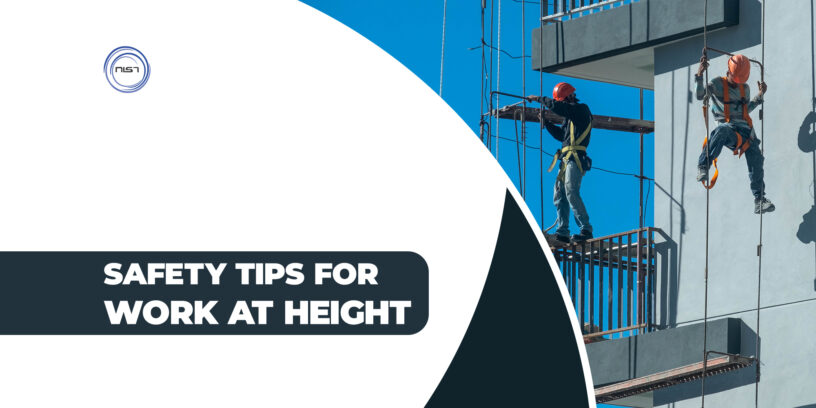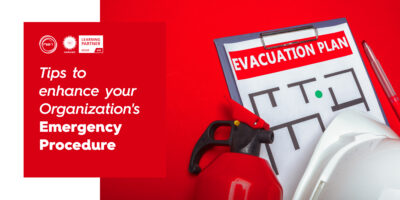Any task that involves a risk of falling from height and suffering physical harm or even death when no safety preventative measures are taken is known as “work at height risk. As risk is a part of working at heights, height-related risks can never be eliminated. The nature of the work is such that employees must work near the tops of bridges, roofs, utility structures, machinery, and, in some cases, even overactive electrical circuits.
According to HSE statistics, the most frequent cause of worker fatalities in 2017, accounting for 28% of all accidents, was working from heights. Across all industries, there were additionally 43,000 non-fatal accidents involving falls from a height. More than 60% of fatalities that occur during high-risk labor include falls from ladders, scaffolds, working platforms, roof edges, and fragile roofs.
Workers who do work at heights must be careful to follow the proper safety procedures, comply with state and federal requirements, and have appropriate training and equipment in place. To provide the best protection possible to workers who do work at heights, employers and employees must be both diligent and alert to any hazardous conditions in or around worksites. This article provides a list of the most significant regulations that employers must adhere to when operating in this capacity.
Planning effectively prevents mishaps and accidents:
All workers must be informed of the proper procedures for working at heights and of the possible consequences of violations. They must be informed of any hazards involved in their work. This general requirement is one of the most important of the OSHA regulations in this area because it covers much of the work performed by workers who work at heights. Specifically, the clause includes:
- Proper climbing and working equipment
- Proper protective clothing and equipment
- Proper methods for lowering and raising a person or object to and from a height
The employer has a responsibility to inspect all work sites for unsafe conditions at frequent and reasonable intervals. The employer must:
- Conduct a walk-through inspection at frequent and regular intervals as part of a written program that covers all aspects of safety
- Ensure that the work site is free from any hazardous conditions
- Conduct an audit every six months of an audit program that is developed in conjunction with the program that is used to prevent and detect hazards
- Develop and follow a written program that clearly describes and specifies safety procedures that are followed and any other hazards involved
- Establish a safety program and safety committee
- Identify hazards
- Conduct training sessions
- Establish and document workplace safety policies and procedures
- Document the results of the inspection
- Communicate changes to the employees
- Maintain records
The first step toward establishing a safety program is to develop a safety committee. This group will meet regularly, at least quarterly, to identify hazards and other workplace safety issues, review current records and develop new records, and conduct safety audits at every worksite. The safety committee will also make recommendations for changes to the employer’s policy. The next step will be to develop a safety program, which requires planning and preparation. A program can be developed by following these steps:
- Establish goals and objectives
- Develop a schedule
- Identify specific hazards
- Develop safety policy
- Develop safety program
- Review the policy and program
- Identify hazards
- Develop plans to eliminate hazards
- Identify the appropriate safety equipment
- Review current records
- Develop and implement safety procedures
The safety committee must make sure that employees understand the safety policies and procedures. The employer may also choose to hire a safety professional to work in this capacity.
Employers should also consider providing annual training sessions to all employees. This type of training is intended to provide employees with the skills to safely perform a job or any operation at heights. Employers are responsible for providing safety training, but most employers do not have the time to do so. If the employer selects to provide training, the employer should provide all employees, including supervisors, with safety training sessions.
Employers should:
- Provide employees with training sessions for at least the hazards they are likely to encounter
- Create procedures that will identify unsafe conditions and instruct employees on how to recognize, manage, and prevent hazards
- Create a training and safety manual and provide it to every employee.
- Ensure that every person, including managers, supervisors, etc. has the necessary training and practical experience required to operate the machinery and follow safety protocols.
The employer will not be able to claim that their employees are adequately trained if they are not provided with a training manual or other written materials that explain and detail the work practices and safety procedures.
The safety manual should cover the following topics:
- Proper methods of lowering and raising workers and objects to and from heights
- Emergency procedures
- Safety precautions for operations where a hazardous situation can occur
- Identify and describe all safety procedures that are required to be followed
- Identify hazardous locations in the workplace
- Identify hazards that need to be removed
- Develop written procedures for handling emergencies
- Inspect the worksite
The Work at Height Regulations of 2005 is designed to reduce the risk of fatalities and other harms from falls from great heights. The Regulations apply to employers or if you have any control over height-related work (such as maintenance personnel, managers, etc. who might hire others to work at height).
Check out some of the safety tips below while working at height:
- Make it a point to only permit properly trained and licensed employees in the workplace
- Always wear a safety harness when working at heights
- Follow all safety guidelines when entering and exiting the work area
- Use a safety harness when working at heights
- Use ladders safely
- Be cautious when working on or next to fragile surfaces
- Use a safety net when working with materials that could fall
- Use a flashlight when working in dark areas
- Use an alarm system when working in dangerous areas
- Use an effective fall protection system when working near or below the ground.
- Take caution in handling or moving large objects
- Use appropriate tools and equipment when working in a hazardous environment
- Use the appropriate safety equipment, such as non-slip footwear, fall protection, head protection, etc.
- Don’t pile too much gear and materials on your scaffold
- Make sure to have a first aid kit on hand in case of an injury
- Be aware of your surroundings and keep an eye out for potential safety hazards
- Always keep an eye on your surroundings
- Stay aware of potential hazards and take safety precautions when working in any environment
“Prevention is always better than cure.” As prevention can stop future mishaps, it is advisable to remove risks before they produce hazards. Employers’ increased awareness of safety aids in reducing risks and fostering a safe and healthy environment. The preventive actions taken now will determine the organization’s safety future. Be cautious! Stay safe! Keep everyone safe!














Leave a Reply